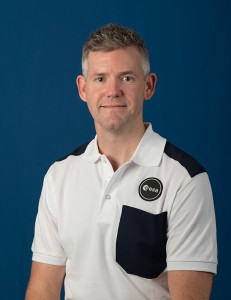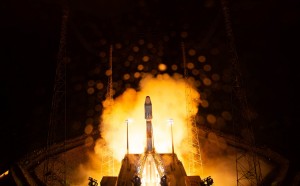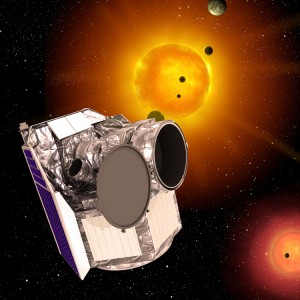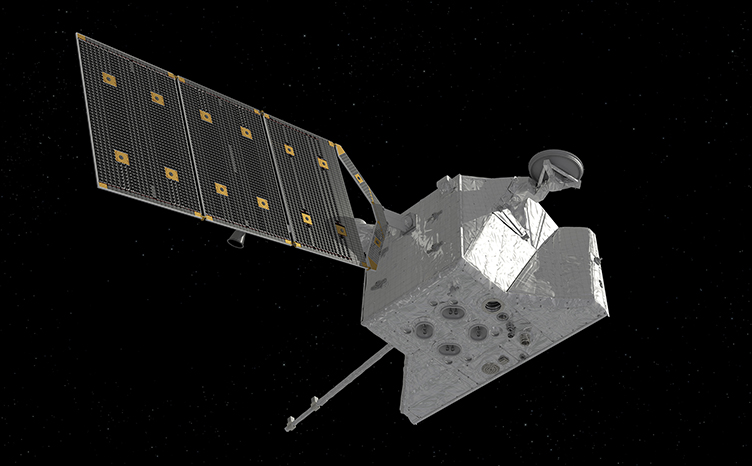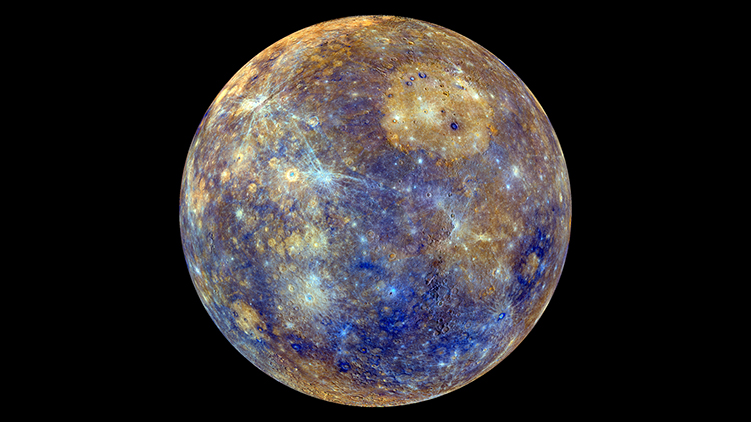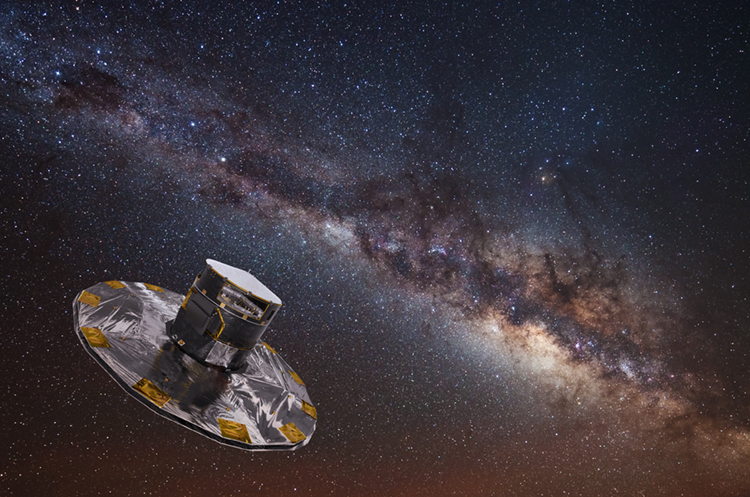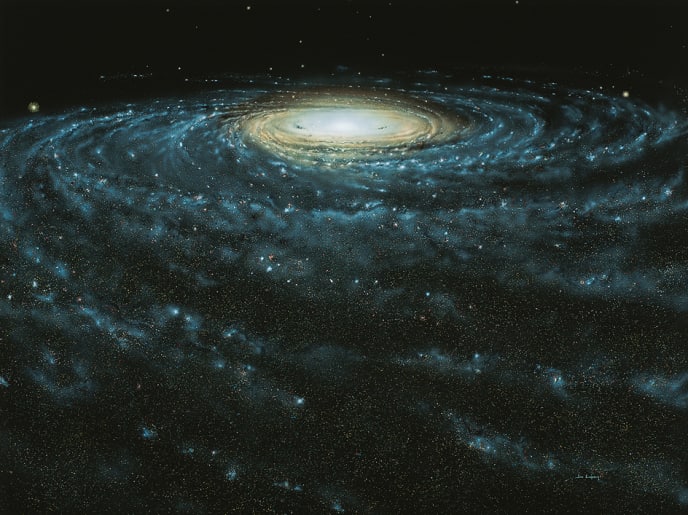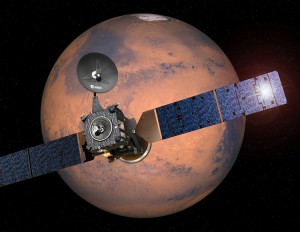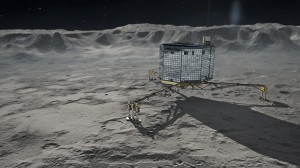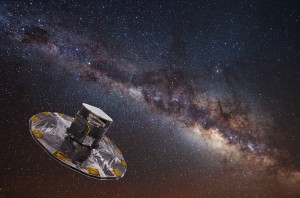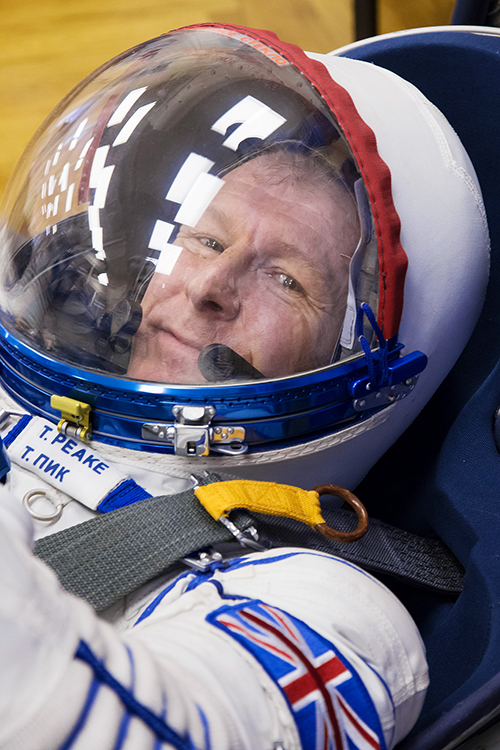Europe’s JUICE Takes Off
Thursday, April 27th, 2023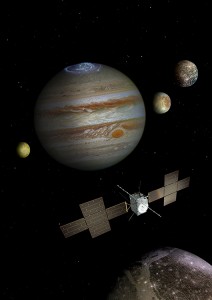
This illustration shows an imagined view of the JUICE (Jupiter Icy Moons Explorer) spacecraft with the planet Jupiter and its four largest moons. JUICE was developed by the European Space Agency (ESA).
Credit: ESA/ATG medialab/NASA/J. Nichols (University of Leicester)/Ganymede /JPL/University of Arizona/DLR
On Friday, April 14th, 2023, the European Space Agency (ESA) launched JUICE. Not a sweet fruit drink, but Jupiter Icy Moons Explorer (JUICE). JUICE is a space probe designed to study the planet Jupiter and its moons. The probe was launched from Guiana Space Center in Kourou, French Guiana, on the northeastern coast of South America. The launch was delayed one day after lightning was detected in the area on Thursday morning. The spacecraft launched aboard an Ariane 5 rocket. JUICE separated from the rocket after thirty minutes and began its long journey.
Where is JUICE going? JUICE’s main targets are the moons Ganymede, Callisto, and Europa. Scientists think these moons have oceans of water under an outer covering of ice. Some experts believe these oceans might contain extraterrestrial life. JUICE will reach Jupiter in 2031 and attempt to enter orbit around Ganymede in 2034. Before attempting orbit, JUICE will conduct 35 planned flybys to search for magnetic signals.
Past space probes have taken measurements of magnetic fields and gravity around Jupiter’s moons. A magnetic field is the area around a magnetic object in which its influence can be felt. Scientists use such measurements to make informed guesses about the characteristics of any subsurface (underground) ocean on each moon. They can estimate the thickness of the ice crust and the amount of water in the ocean.
JUICE carries instruments to collect detailed observations of Jupiter and its moons. The spacecraft’s radio instruments and magnetometer will collect data on the environment surrounding the moons. Its spectrometer will identify chemicals in Jupiter’s atmosphere and on its moons. JUICE’s laser altimeter will use laser pulses to map the surfaces of the moons. The spacecraft’s powerful camera will be able to spot surface features as small as 8 feet (2.5 meters) across on Ganymede. JUICE will use radar to detect subsurface features.
JUICE’s main goal is to help scientists understand Ganymede, Callisto, and Europa and their oceans more completely and accurately. The spacecraft will also take some distant measurements of other moons. However, a probe launched by the National Aeronautics and Space Administration (NASA) in October 2024 might beat JUICE to Jupiter. The Europa Clipper is planned to launch from the SpaceX Falcon Heavy rocket, a much stronger rocket than the Ariane 5. The stronger launch will propel the Europa Clipper toward Jupiter at a much faster speed. The two missions are planning to work together to better understand Jupiter and its moons!

